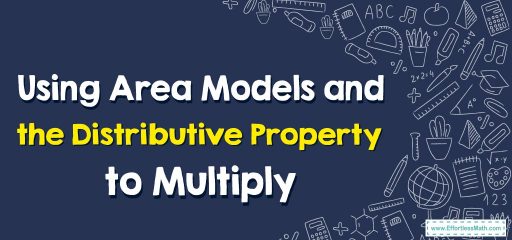How to Use Area Models and the Distributive Property to Multiply?

Step 1: Understand the Area Model:
Step 2: Break down the Numbers:
Step 3: Use the Distributive Property:
Step 4: Draw the Area Model:
Step 5: Multiply and Add:
Using Area Models and the Distributive Property to Multiply – Example 1:
Solution:
\(20 × 4 = 80\)
\(4 × 4 = 16\)
\(80 + 16 = 96\)
Therefore, \(24 × 4 = 96\).
Original price was: $109.99.$54.99Current price is: $54.99.
Original price was: $109.99.$54.99Current price is: $54.99.
Original price was: $114.99.$54.99Current price is: $54.99.
Related to This Article
More math articles
- How to use Intercepts
- Grade 3 Math: Fractions on a Number Line
- 3rd Grade OST Math FREE Sample Practice Questions
- Sentence Solvers: How to Completing Addition and Subtraction Equations
- How to Graph a Horizontal or Vertical line?
- Unlock the Future: 10 Unexpected Advantages of Online Learning in 2024
- Number Properties Puzzle -Critical Thinking 3
- Professions related to mathematics
- Decoding Discreteness: A Comprehensive Guide to the Probability Mass Function
- How to Use Right-Triangle Trigonometry



















What people say about "How to Use Area Models and the Distributive Property to Multiply? - Effortless Math: We Help Students Learn to LOVE Mathematics"?
No one replied yet.